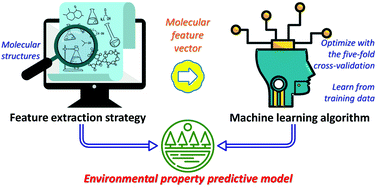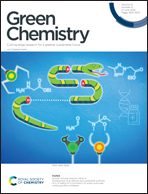A novel unambiguous strategy of molecular feature extraction in machine learning assisted predictive models for environmental properties†
Abstract
Environmental properties of compounds provide significant information in treating organic pollutants, which drives the chemical process and environmental science toward eco-friendly technology. Traditional group contribution methods play an important role in property estimations, whereas various disadvantages emerge in their applications, such as scattered predicted values for certain groups of compounds. In order to address such issues, an extraction strategy for molecular features is proposed in this research, which is characterized by interpretability and discriminating power with regard to isomers. Based on the Henry's law constant data of organic compounds in water, we developed a hybrid predictive model that integrates the proposed strategy in conjunction with a neural network framework. The structure of the predictive model is optimized using cross-validation and grid search to improve its robustness. Moreover, the predictive model is improved by introducing the plane of best fit descriptor as input and adopting k-means clustering in sampling. In contrast with reported models in the literature, the developed predictive model demonstrates improved generality, higher accuracy, and fewer molecular features used in its development.



 Please wait while we load your content...
Please wait while we load your content...